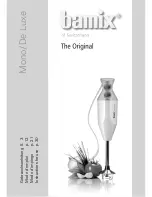
10, 12, 12MTK User Manual
5.1.1: MONO INPUT CONTROLS
CHANNEL CONTROLS > MONO INPUT CONTROLS
5.1.1: MONO INPUT CONTROLS
LF Level
Adjust the boost/attenuation of the low frequency shelving filter
The LF shelving filter has a fixed frequency of 60Hz. Frequencies below this will be boosted or attenuated
depending on the control setting. With this Sapphyre asymmetric EQ, there is a small boost at the filter frequency
on cut and a small cut on boost. See section 1.02 for more detail.
AUX1 / AUX2
Adjust the level of this channel's contribution to the Aux 1 and Aux 2 busses
An Auxiliary bus is a summed 'alternate' mix of any contributing channels. In other words - for example - the
console's Aux 1 output will consist of all channels whose Aux 1 controls are greater than -infinity (off) - mixed
proportionally according to the relative levels of all the Aux 1 controls. You could use this for a stage monitor mix,
or a 'send' to an external FX processor, for example. The source for the Auxiliary bus send can be either
post-fader or pre-fade, as set by the button in the Auxiliary Masters section.
AUX3/FX
Adjust the level of this channel's contribution both to the Aux 3 bus (as per Aux 1 and 2), and the
Internal FX processor.
The Aux 3 bus and the FX are independant, but share the same Send level. The source for the FX bus send is
always post-fader so that a source’s contribution to an effect is proportional to its contribution to the mix. The
Aux 3 source can be swtiched Pre or post (as per normal Aux send).
MUTE
Mute the signal
This is a pre-fade mute and so does not affect the USB send on the Signature 12MTK console. However, it will
mute all Aux bus contributions, as well as MST and GRP 1-2 (Signature 12 and 12MTK) contributions. When a chan-
nel is muted, the Peak & Mute LED will light.
PAN
Adjust the signal's stereo position and group routing.
For Signature 10, pan affects only the signal's position on the Master (MST) Left/Right output. For Signature 12
and 12MTK pan also determines the proportion of signal sent to Group 1 (left) and Group 2 (right). For example,
with a channel's 1-2 and MST routing switches engaged, turning the control right puts more of the signal in the
right (MST) channel AND the Group 2 bus. Turning the control fully right will route the signal fully to the right-
hand master channel AND the Group 2 bus.
















































